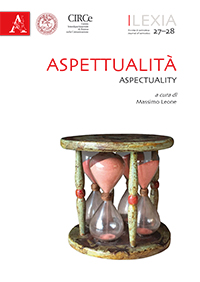Estratto da
LEXIA. RIVISTA DI SEMIOTICA
Aspettualità / Aspectuality
Mente incarnata e linguaggio. La dimensione aspettuale nella cognizione autistica
LEXIA. RIVISTA DI SEMIOTICA
Aspettualità / Aspectuality
Mente incarnata e linguaggio. La dimensione aspettuale nella cognizione autistica

Autism is a neurodevelopmental disorder that seems to mainly affectsocial cognition. The linguistic profile of subjects with autism showssome alterations in the use of aspectuality. The essay tries to highlightthe social dimension of aspectuality by examining these alterations inpatients. Firstly, it analyses literature that empirically investigates specificautistic alterations in the use of aspectuality. It then discusses twotheoretical backgrounds of autism: the classical idea of lack in the Theoryof Mind (Baron Cohen 1997) and the hypothesis of a deficit in the cognitive constructions of priors during perception (Pellicano and Burr2012). Both approaches are discussed considering not just empirical dataon autism, but also philosophical questions linked to the passage fromthe computationalist theories to the embodied cognition theories incognitive sciences. The essay concludes that the coherent use of aspectuality — if analysed from the more ecological point of view of embodied cognition theories, rather than from the computationalist perspective — finds its aetiology in the social dimension of human cognition, rather that in the individual one. In fact, the fixation of reference (as well as that of temporal reference and of aspectuality) in a specific object of joint attention stems from the need to be understood, and not from the need to understand oneself. In non–conventional contexts such as dreams, indeed, aspectuality is frequently altered, despite the possibility for the subject to understand the object of temporal reference.
| pagine: | 459-484 |
| DOI: | 10.4399/978882550876523 |
| data pubblicazione: | Giugno 2017 |
| editore: | Aracne |








